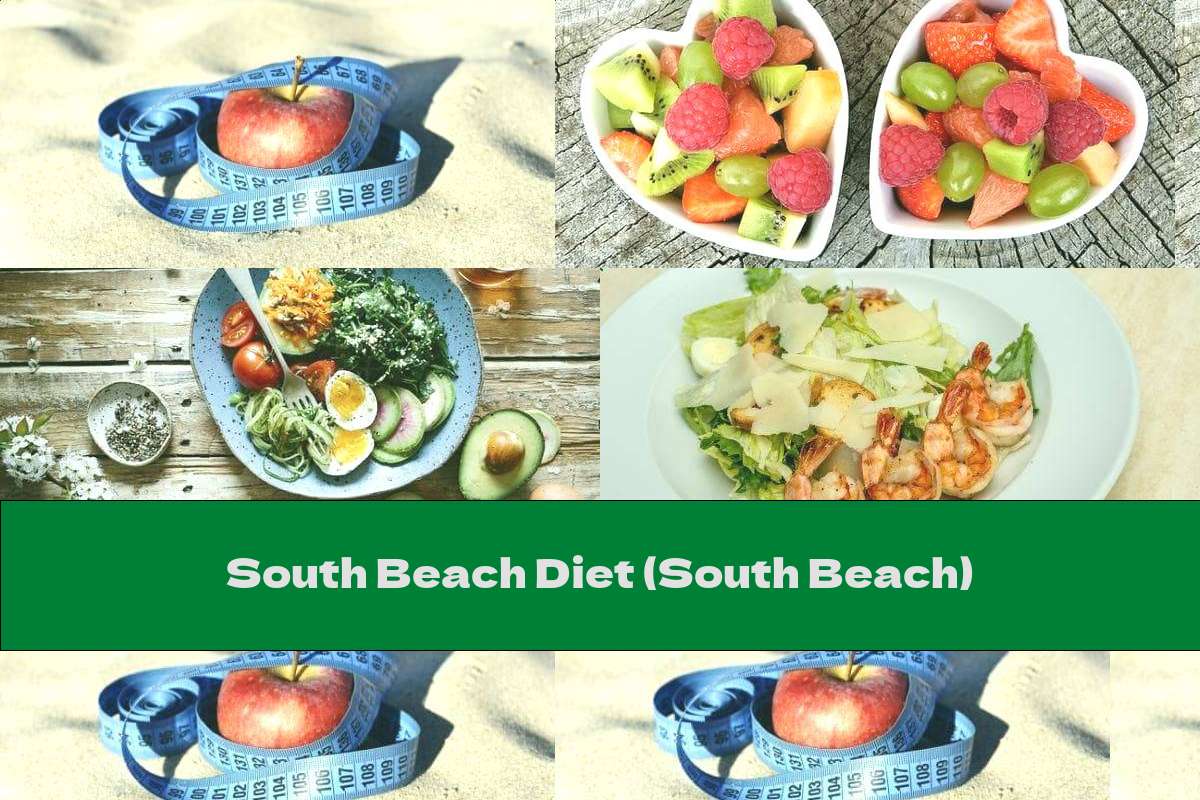South Beach Diet (South Beach)
 Author: Ivan Red Jr.
Time for reading: ~3
minutes
Last Updated:
August 08, 2022
Author: Ivan Red Jr.
Time for reading: ~3
minutes
Last Updated:
August 08, 2022

In this article, learn more about South Beach Diet (South Beach). South Beach Diet (South Beach).
The diet was created in 2003 by cardiologist Arthur Agston. This diet is named after the most shiny beaches in Miami and was created to sculpt the body healthily and easily. The diet is rather low in carbohydrates, with more protein and healthy fats, although you do not need to focus on counting calories and macronutrients.
The purpose of the diet is to change the overall balance of the food you eat and thus to promote weight loss and stimulate in you the desire for a healthy lifestyle. The diet is recommended even if you do not want to lose weight, but want to improve your diet.
DetailsThe diet provides a balance between carbohydrates, proteins and healthy fats, which makes the diet rich in nutrients, fiber and you can follow it for life.
The main purpose of the regime is to wean you off the consumption of harmful carbohydrates. The author of the diet uses the glycemic index of foods to determine which ones to avoid. Foods with a high glycemic index raise blood sugar faster and to higher values than foods with a lower index. Some evidence suggests that rising blood sugar increases appetite, leading to weight gain and possibly diabetes.
The consumption of whole grains, fruits and vegetables rich in fiber, as well as the intake of whole fats is encouraged.
Carbohydrates
The South Beach diet is low in carbohydrates. With a normal diet, about 45% to 65% of your daily calories come from them. In the diet, the caloric intake per day is 2000 calories, of which 225 to 325 grams are carbohydrates per day.
In the last phase of the diet, you can consume up to 28% of daily calories in the form of carbohydrates or about 140 grams daily (diets that are to limit carbohydrate intake reduce them between 20 and 100 grams per day).
Phases of the dietPhase 1:
This two-week phase is designed to eliminate the appetite for high-sugar, refined foods to accelerate weight loss. Almost all carbohydrates are excluded, including pasta, rice, bread and fruit. You can't even drink fruit juice or alcohol. The focus is on the consumption of lean proteins such as seafood, skinless chicken, lean beef and soy products. You can eat high-fiber vegetables, low-fat dairy products and unsaturated fat foods such as avocados, nuts and seeds.
Phase 2:
This is a long-term phase of weight loss. You can start returning some Phase 1 forbidden foods to your menu, such as whole grain breads, brown rice, fruits, and more vegetables. You stay in this phase until you reach your goal.
Phase 3:
The last phase is supportive and is designed for a healthy diet for life. You continue to follow the principle as in the first two phases. You can eat all kinds of foods in moderation.
About the menu:
Here's what the menu looks like in phase 1:
Breakfast: Omelet with smoked salmon or eggs with spinach and ham, along with a cup of coffee or tea.
Lunch: Vegetable salad with mussels or shrimp, iced tea or carbonated water.
Dinner: Tuna or pork in combination with grilled vegetables or salad.
Dessert - the diet encourages you to enjoy a dessert such as ricotta cheesecake or coffee cream.
Results
You are expected to lose 3 to 5 pounds over a period of 2 weeks while you are in phase 1. Phase 2 is followed by smooth and healthy weight loss of 1-2 pounds per week.
Most people can lose weight with almost any diet, especially in the short term. The most important thing for losing weight is how many calories you take in and how many you burn. Losing 1-2 pounds a week is the perfect balance, although it may seem small, but it will help you maintain your goals permanently.
Losing a lot of weight in a short time means that the reduced weight may be due to water, but not fat.
Health benefits
The diet, although mainly aimed at weight loss, also promotes healthy changes. Studies show that a long-term diet that is rich in healthy carbohydrates and fats improves health. For example, diets low in carbohydrates and healthy fats improve the levels of good cholesterol in the blood.
Risks
The diet is safe, but if you have severely restricted carbohydrates, you can bring your body to ketosis - a condition in which the body adjusts from burning sugars for energy to burning fat, which leads to the accumulation of ketones in the body. Side effects include nausea, headache, mental fatigue, bad breath, and sometimes dehydration and dizziness.
- How baked apples help us lose weight
- 7-day diet of General Motors for fast weight loss
- Slim figure with mint tea
- Seven-day rice diet
Related Articles
- The Ultimate Guide to Diet???14: Benefits, Components, and Tips
- Ultimate Guide to Healthy Nutrition: Benefits, Diets, and Recipes
- Ultimate Guide to Healthy Nutrition: Recipes, Diets, and Nutrients
- Nutrition and Gastritis: Managing Symptoms Through Diet
- The Power of Phytosterols: Benefits, Sources, and Diet Tips